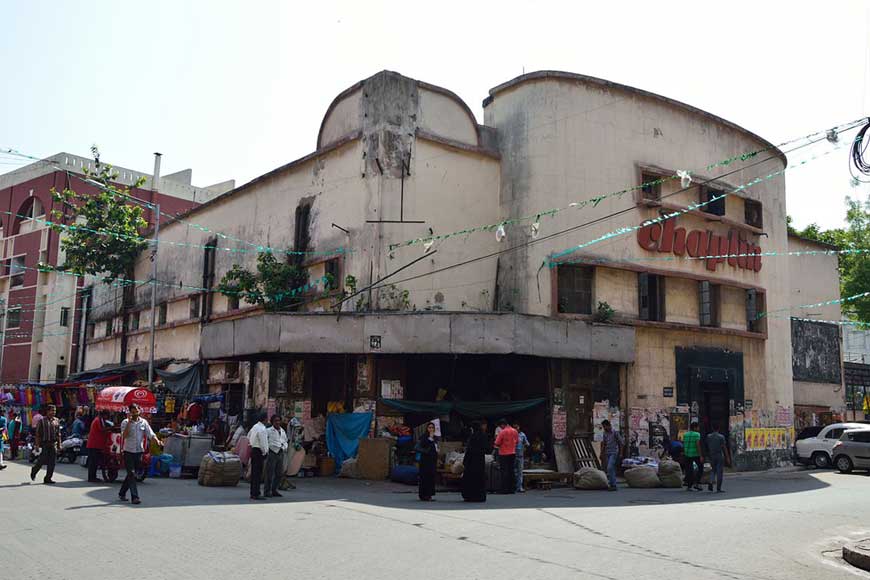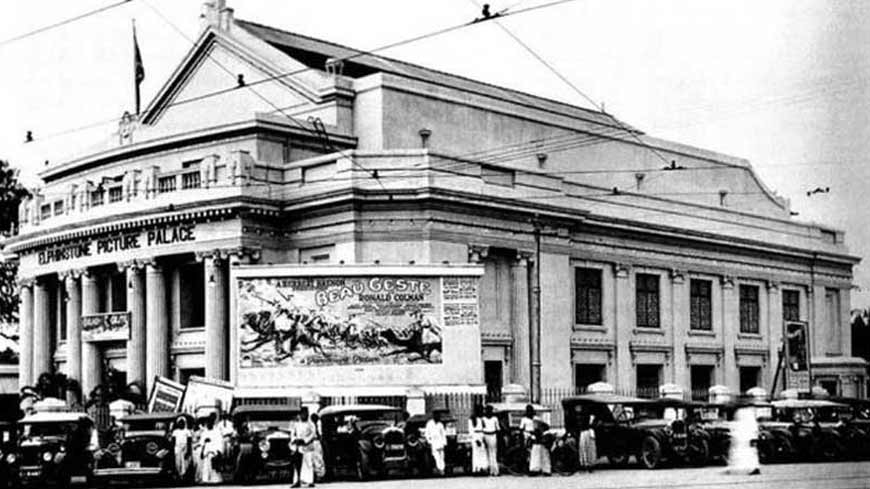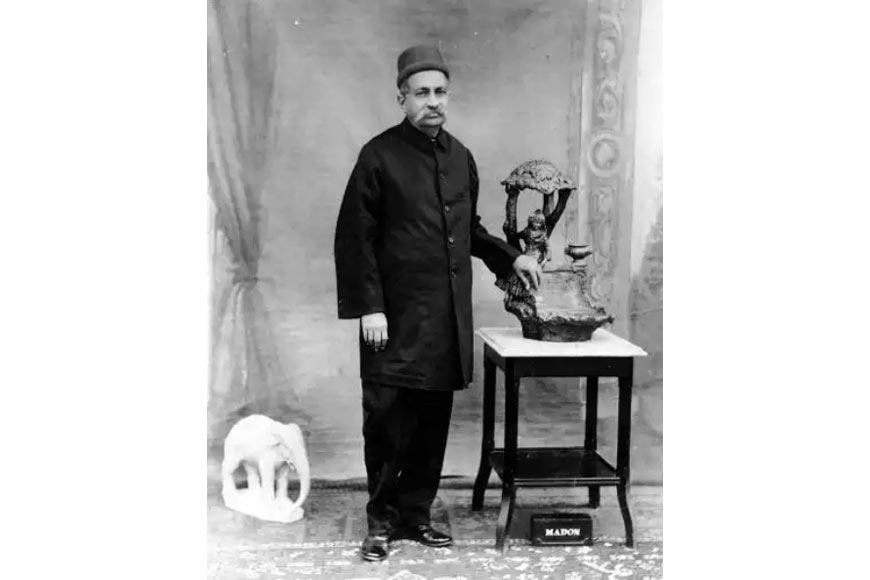The lost heritage of Chaplin Hall: India’s first single screen movie theatre - GetBengal story

Chaplin Cinema, Kolkata
After the British settled in Calcutta, they envisioned a majestic plan for the growth and development of the city. Kolkata flourished in the 19th century to become the second most important city of the British Empire after London. With the growth and development of the city, its cultural sphere expanded as well. Business thrived and British and Europeans arrived in large numbers and settled in the newly developing city. They introduced various modes of entertainment in the city like opera and theatre. In 1813, Chowringhee Theatre, Calcutta’s first auditorium was built. The shifts in politics and society made the theatre a viable business venture for the first time in Calcutta.
 Elphinstone Picture Palace was later named Chaplin Cinema
Elphinstone Picture Palace was later named Chaplin Cinema
By the fag end of the 19th century, a certain Professor Stevens exhibited films in Calcutta. It was in 1896, when Stevens screened for the first time, the Lumiere programmes at Star Theatre. However, by the early decade of the 20th century, Bengal had its first indigenous filmmaker—Hiralal Sen. Calcutta at the time had a strong tradition of professional theatre, and the theatre houses served as outlets for films. The earliest screenings were held in theatre houses where films appeared as a double bill attraction alongside the plays.
Prominent theatre owners like Amarendra Nath Dutta of Classic Theatre, encouraged the production of films by allowing Hiralal Sen to photograph his stage productions, which were then advertised as ‘superfine pictures from our world-renowned plays’ and exhibited. Filmmaking in Bengal received a boost with the entry of Jamshed Framji (J.F) Madan (1856–1923), the ‘Man with the Midas Touch’ in the picture. Referred to as the father of film production in India, Madan was a theatre and film magnate who was one of the pioneers of film production in India, an early exhibitor, distributor and producer of films and plays. He built the country’s first movie theatre in Calcutta in 1907 and named it Elphinstone Picture Palace. It was later renamed “Minerva” and was a popular theatre for screening Hollywood films. The hall was again renamed Chaplin Cinema but that could not salvage its future.
Jamshed Framji Madan was born into a Parsi business family in Bombay. His father suffered a huge monetary loss when Bombay Reclamation Bank, which was responsible for reclaiming land between the seven islands of Bombay, failed. J.F Madan had to leave school, and he joined Elphinstone Dramatic Club as a prop boy in 1868. By 1875, this amateur club turned into a professional theatre company staging shows all over India. In fact, long before films became a popular medium in India, theatre dominated the entertainment and arts scene. The Parsis of Bombay owned most of the theatre production companies. However, most theatrical shows and productions were had a limited target audience–British officials and the English public.
In 1882, Madan left the theatre company and had a short successful stint in business at Karachi. He moved to Calcutta in 1883. The theatre in Calcutta, which experienced a rebirth in the 1830s, peaked during Madan’s time. He earned a fortune in Calcutta by supplying goods to British army cantonments. He accumulated vast wealth and with the money, he bought Corinthian Hall, a renowned theatre hall where plays were staged regularly. He also took over the Elphinstone Theatre Company, where he had started his career, from Cooverji Nazir, one of the founders of the theatre. Corinthian Hall was turned into Corinthian Theatre, and it became very popular for Parsi theatre shows, which were full of grandeur and had women actors, a rarity in those days. By 1890, Madan was the owner of two Parsi theatre companies and had amassed vast wealth in Bombay.
 Jamshedji Framji Madan
Jamshedji Framji Madan
In 1902, he founded Elphinstone Bioscope Company, and began producing and exhibiting silent movies including Jyotish Sarkar's Bengal Partition Movement in 1905. He consolidated his position considerably after acquiring rights to Pathé Frères films of Paris. The company had humble beginnings. First, they launched ‘bioscope’ shows–screened imported films in Maidan or the Brigade Parade Ground, Calcutta. Then they became known for screening and distributing foreign films. Under the name of Elphinstone Bioscope Company, they made the initial foray into film distribution and exhibition by acquiring the rights to exhibit films produced by foreign studios. Elphinstone Bioscope Company also produced a number of short films. He started film shows in Alfred Theatre, which he bought in the same year. In 1907, he established Elphinstone Picture Palace (later known as Chaplin Cinema), situated on Hogg Street (New Market) which was the first permanent show house in Calcutta. The palace was later named “Minerva” and was a popular theatre for screening Hollywood films. Elphinstone Picture Palace was the first of his chain of 37 cinema halls he owned in a decade’s time.
Madan decided to renovate Elphinstone Picture Palace, went for a total makeover of the hall, and renamed it Minerva. It soon became a popular hangout for a young generation of audience who lapped up the popular Hollywood staples. It was a small but comfortable cinema hall with plush seating arrangements and great ambience.
In 1917, Madan produced Satyavadi Raja Harishchandra which was the first feature film shot in Calcutta. In 1919, Elphinstone merged into Madan Theatres Limited, a joint stock company and created history in the film business when it produced the first Bengali feature film, ‘Bilwamangal’ in the same year under the banner of Elphinstone Bioscope Company. The film was first released in Cornwallis Theatre (later renamed Shree in Hatibagan, North Kolkata). By late 1920s, the company owned a number of cinema halls in Calcutta including Palace of Varieties (later named Elite Cinema), the Electric Theatre (Regal), Grand Opera house (Globe) and Crown Cinema (Uttara in Hatibagan, North Kolkata). The first talkie film in Bengali, Jamai Shashthi, was produced and screened by the Madan Theatres in 1931.
After Madan died in 1923, his third son, J.J. Madan took over as the Managing Director of Madan Theatres and led the company to the zenith. Madan Theatres came a long way: from screening in the tents to becoming the largest film production, distribution, and exhibition company in India, Burma, and Ceylon. However, the 1930s saw a slow decline of the company. As the silent-film era ended, Madan Theatres invested heavily into sound conversions, a move that put heavy financial strain on the company. Moreover, the company had become too large to be managed efficiently. Finally, a failed deal with Columbia pictures depleted the company’s finances and the company was closed.
From the later part of the 1960s, Minerva’s fate went on a downhill journey. The prevailing political unrest in the city was largely responsible for the audience to distance themselves from the hall. The deserted booking counters and lobby was a pathetic sight and a reminder of the good old days the hall had witnessed in the past. The sophisticated hall began to lose its charm and finally downed shutters after facing heavy financial losses. The Kolkata Municipal Corporation (KMC) took over the hall, renovated it and in an attempt to salvage its profits, renamed it Chaplin Cinema after the legendary Hollywood actor. However, this move was too late and too little to change the hall’s fate. Chaplin continued to suffer huge losses at the booking counters and could not sustain any longer on its own. In 2003, Chaplin was finally demolished and with it, the golden era of Indian film history was lost forever.
Today, many of the theatres that once belonged to the Madan family either have been demolished or are counting their days before annihilation. However, Jamshedji Framji Madan and his company have marked their legacy in the history of Indian cinema. Madan was not just the champion of cinema; he was the torchbearer of the Indian film industry.











